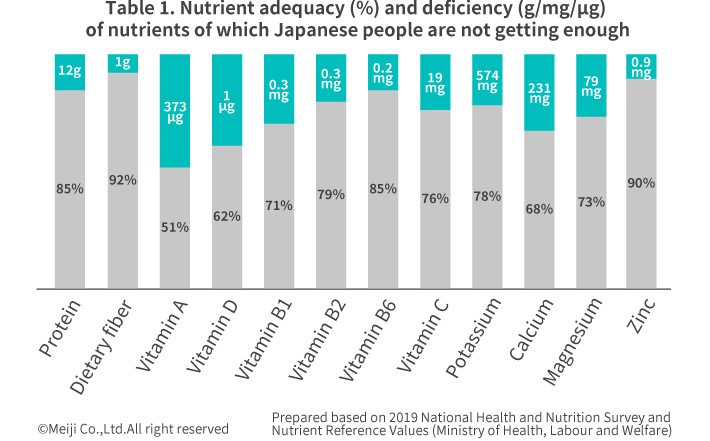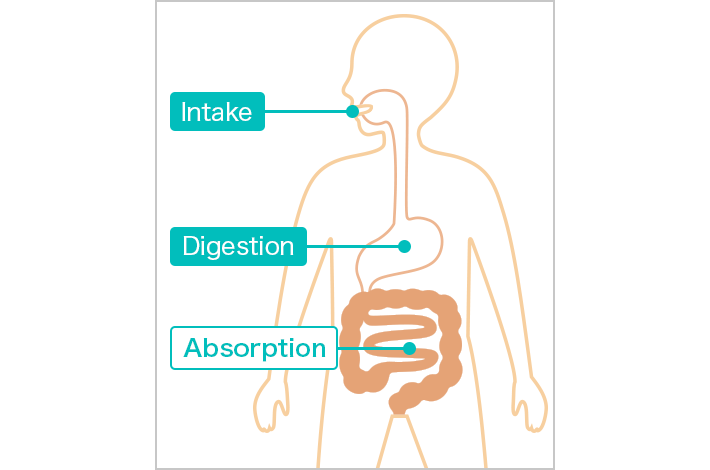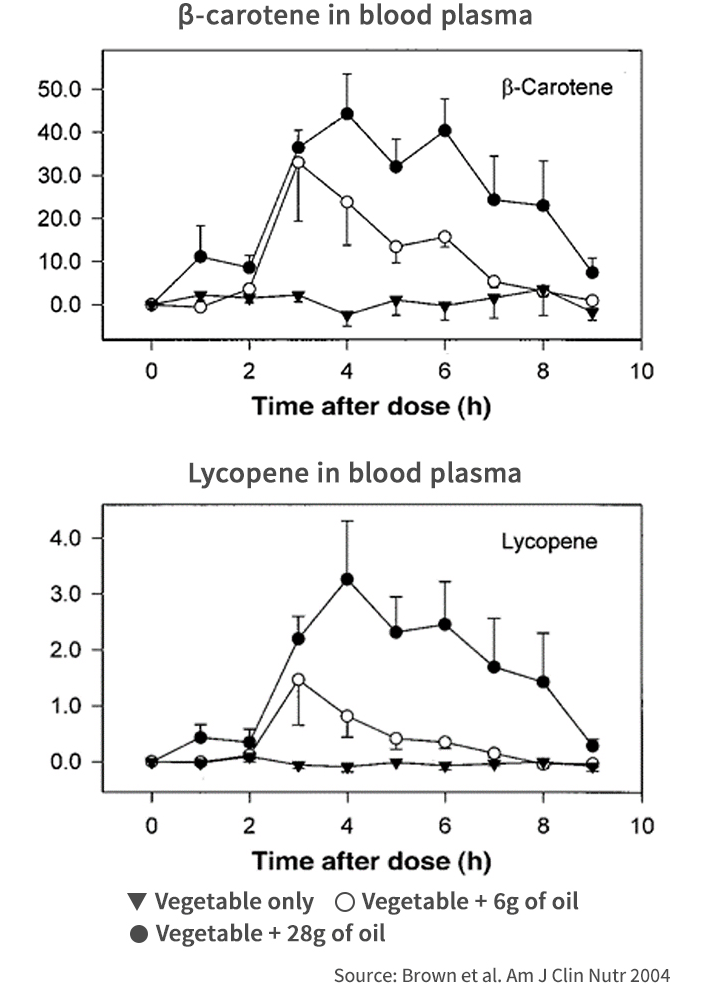
Facts about Nutrition – Conditions of Intake and Mechanism of Absorption –
Japanese people tend to be deficient in many nutrients
We take in various nutrients from our daily meals. However, according to the report on a nutrition survey conducted by the Ministry of Health, Labour and Welfare in 2019, the nutritional intake state of Japanese people showed that they were deficient in many nutrients, including protein and vitamins (Table 1).

The mechanism of nutrient absorption
When we eat food, it is first digested in the stomach, then it moves to the small intestine to be absorbed into the body. The nutrients that are not absorbed there move to the large intestine and are eventually excreted as excrement.

The mechanism of absorption varies by nutrient. For example, it has been found that pigment components that are contained in large amounts in vegetables and fruits (carotenoids such as β-carotene and lycopene) are not easily absorbed into the body when the food is unprocessed. For example, when a carrot is eaten raw, only about 10% of its β-carotene is absorbed into the body. However, these nutrients readily dissolve in oil, and so the absorption rate can be improved by eating them with fat.

As you can see, it is important to consider how the meal is eaten to make sure that the nutrients are absorbed into the body properly.
Discovering the possibilities of lactic acid bacterium in nutrient absorption
Meiji, which has been researching nutrition for many years with a commitment to the “nourishment of society,” has continued to verify healthy food products that improve the absorption rate of carotenoids. In this process, we identified yogurt as a food product with new possibilities; our research showed that the functions of lactic acid bacterium and its products promote the absorption of certain nutrients.

















